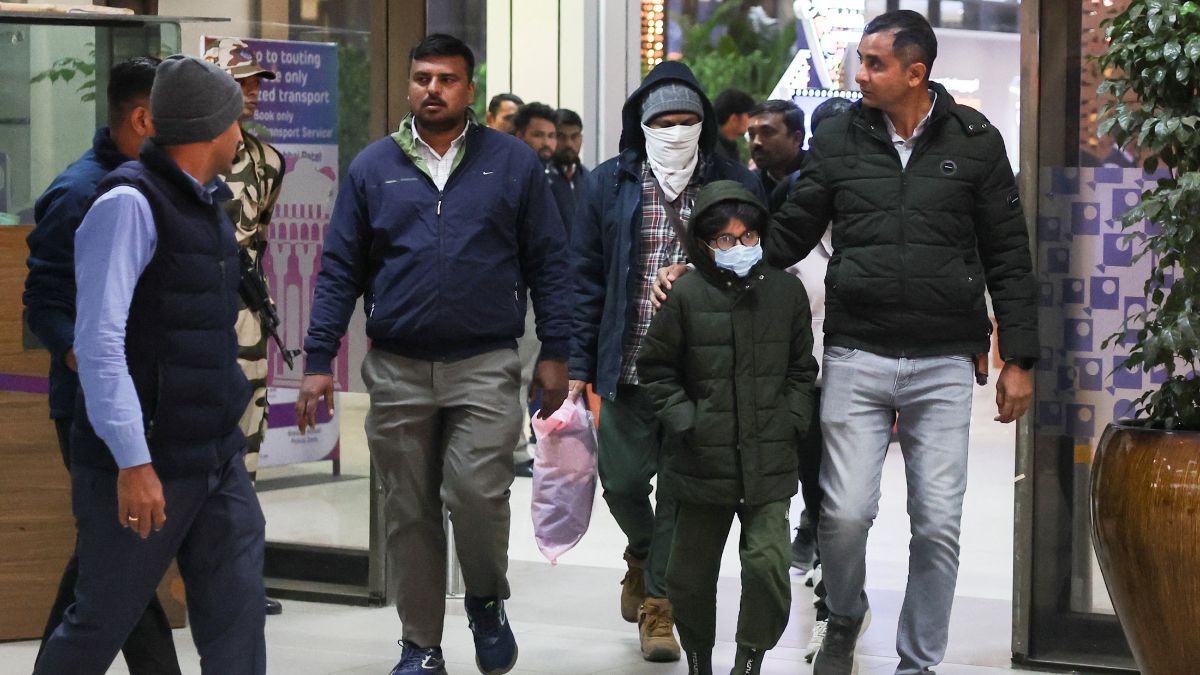A US military aircraft carrying 104 deported Indian migrants arrived in Amritsar on Wednesday.
Among them, 33 individuals are from Haryana and Gujarat each, while three are from Maharashtra and Uttar Pradesh each, and two are from Chandigarh.
ALSO READ | Rape, torture, death: How illegal Indian immigrants risk it all to reach the US
Since Donald Trump took office as the US President last month, law enforcement agencies in the country have intensified their crackdown on illegal immigrants.
This is the first group of undocumented Indian migrants to be deported by the US government.
However, many are questioning how these Indians managed to enter the US in search of their American dream.
Here’s what actually happened:
How these Indians entered the US illegally
Many Indians aspire to move to the US, primarily in search of better economic opportunities. They believe that the ‘Land of the Free’ offers the chance for a better life. Several migrants feel that reaching a major US city will allow them to secure stable jobs and improve their living conditions.
Families of the deported individuals from Punjab revealed that they had spent between Rs 30 lakh and Rs 50 lakh to send their relatives to the US, with many of them arriving in recent months through illegal routes. They had yet to apply for asylum, The Indian Express reported.
Impact Shorts
More ShortsA relative of Daler Singh from Salempur village in Amritsar shared that he had reached the US only a month ago. He had worked as a bus driver in India and had two children. His family had paid Rs 30 lakh for his journey, and he had entered the US just 30 days prior, the relative told the newspaper.
Upon his return home on Wednesday night, Jaspal alleged that he had been deceived by a travel agent who had assured him of a legal route to the US. He had explicitly requested to be sent with a proper visa, but the agent misled him. The deal had been finalised for Rs 30 lakh.
“I had asked the agent to send me through a proper visa. But he deceived me," he said, adding that the deal had been finalised for Rs 30 lakh.
Jaspal said that he had flown to Brazil in July last year and had been promised that the rest of his journey to the US would also be by air. However, he alleged that the agent had forced him to cross borders illegally.
After spending six months in Brazil, he managed to enter the US but was soon caught by the Border Patrol. He was held in custody for 11 days before being deported. Jaspal said that he did not know he was being deported to India.
“We were handcuffed and our legs were chained. These were opened at the Amritsar airport," he alleged.
ALSO READ | Fact-check: Were illegal Indian immigrants deported from US handcuffed on flight?
Harwinder Singh, from Tahli village in Hoshiarpur, recounted that he had left for the US in August last year. His route had taken him through Qatar, Brazil, Peru, Colombia, Panama, Nicaragua, and finally Mexico.
He explained that from Mexico, he and others were taken across the border into the US. During the journey, a boat carrying them nearly capsized at sea, but they survived.
Singh shared that his travel agent had initially promised to take him to Europe before heading to Mexico. He had spent Rs 42 lakh for the trip.
Many used the ‘donkey route’: What does it mean?
A deportee from Punjab described the ‘donkey route’ that was used to reach the US.
He recounted that their belongings, including clothes worth Rs 30,000-35,000, were stolen along the way.
According to him, the journey first took them to Italy before they were transported to Latin America. He said they had to go through a 15-hour boat journey and were forced to walk 40-45 kilometres.
“We crossed 17-18 hills. If one slipped, there would be no chance of survival… We have witnessed a lot. If anyone got injured, they were left to die. We saw dead bodies," he said.
ALSO READ | ‘More expensive than first-class’: Why did Trump use military plane to send back illegal Indian immigrants?
But what exactly is a donkey route?
In pursuit of the American dream, many Indians take the ‘Dunki’ route, commonly known in English as the ‘donkey route.’ The term originates from the Punjabi word “dunki,” which refers to hopping from place to place.
This method involves travelling through multiple countries, often making stops in Central American nations such as Panama, Costa Rica, El Salvador, and Guatemala. From there, migrants attempt to cross into the US on foot with the assistance of agents and human smugglers.
Indians deported from the US
Migration has been a key topic in discussions between India and the US since Donald Trump took office last month. The issue is also expected to come up during Trump’s upcoming talks with Prime Minister Narendra Modi.
While previous US administrations have deported illegal Indian immigrants, this is the first time Washington has used a military aircraft for such operations. It also marks the longest-distance deportation carried out using a military plane.
In recent years, there has been a sharp rise in the number of Indians attempting to enter the US through the US-Canada border. In the year ending September 30, the US Border Patrol arrested over 14,000 Indians along this border, which accounts for 60% of all arrests there and represents a more than tenfold increase from two years ago.
With inputs from agencies
)